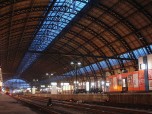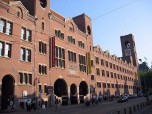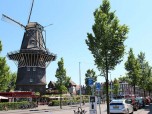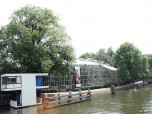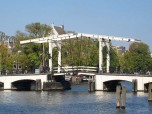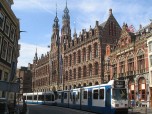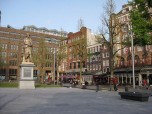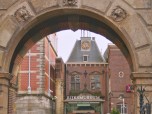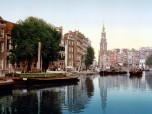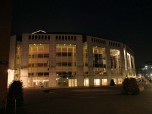The Van Gogh Museum is located in the city of Amsterdam which is the capital of the Netherlands. The museum focuses on Vincent van Gogh and his contemporaries. The museum has the largest collection of Vincent van Gogh paintings in the world. It is one of the most well-known and prominent art museums in Europe and the most popular museum in the Netherlands.
The museum has 200 of the artist’s 864 surviving paintings, over 400 drawings, 30 prints, and 700 letters by him. Many of the letters were written to his brother, and they offer an understanding of the artist’s complicated life. The most important exhibition chronicles the different phases of the Van Gogh’s life. Additionally, the permanent collection has nine self-portraits, and a number of his earliest paintings that date back to 1882.
The museum also displays several works of art by the artist’s post-Impressionist and Impressionist contemporaries. Comprehensive exhibitions about a variety of nineteenth century art history subjects are on display too. The museum exhibits sculptures by Jules Dalou and Auguste Rodin, as well as paintings by many famous artists such as Édouard Manet, Paul Gauguin, Claude Monet, Georges Seurat, and Henri de Toulouse-Lautrec.
Museum History
After Van Gogh died in 1890, his paintings became the property of his brother, Theo. Six months after Vincent’s death, Theo died, and the works of art then became the possession of his widow, Johanna. She sold many of his paintings with the hope of making her brother-in-law’s work widely known, but she also kept a personal collection of his artwork.
After she died in 1925, her son inherited the art collection. Later, the works of art were displayed at the Stedelijk Museum in Amsterdam for many years. In 1962, the collection was given to the Vincent van Gogh Foundation. In 1963, the Dutch government commissioned a design for the Vincent van Gogh Museum from the Dutch architect, Gerrit Rietveld. A delay in the construction was caused by the death of the architect one year later. The museum was not finished until 1973.
In the late 1990’s, the museum was remodeled by Martien van Goor, a Dutch architect. An exhibition wing was added in 1999, and it was designed by Kisho Kurokawa, a Japanese Modernist architect. The museum closed in 2012 for six months for renovations. Because of this, several works of art from the collection were shown at the Hermitage Amsterdam.
Architecture of the Museum
The Van Gogh Museum has two different buildings, and the Rietveld building is the main structure where the collection is exhibited. The architecture style is Modernist and has wide open spaces. The art museum has four stories and a rectangular layout. The ground floor has an introductory art exhibition, cafe and shop. The first floor exhibits Van Gogh’s work chronologically.
The next floor provides important information regarding the restoration process of the paintings. It also has an area for temporary exhibits. The third floor displays many paintings by the artist’s contemporaries. The central hall has a staircase that lets sunlight into the art museum through a high atrium.
The second building is the Exhibition Wing. Its design is a mixture of Wester and Eastern architecture. The style is a blend of Eastern asymmetry and rational geometry. Visitors enter this building by way of a very uniquely designed passageway that is under the Museum. This building has an oval layout and three stories.
About the Artist
Vincent van Gogh was a post-Impressionist painter who was born in Groot-Zundert in the Netherlands. His artwork is famous for its bold colors, emotional themes, and rough beauty. In a ten year time span, he painted nearly nine hundred works of art.
The artist was not successful during his lifetime, and only sold one painting in his career. During his life, he experienced frequent episodes of mental illness. At one point in his life he cut part of his ear off. At the age of 37 he died from a self-inflicted gunshot wound. The artist only became famous after he died.
Famous Works of Art
Some of the most famous paintings by Vincent van Gogh include: The Potato Eaters (1885), Self-Portrait with Straw Hat (1887/88), The Yellow House (1888), Self-portrait (1888), Sunflowers (1889), September (1889), The Starry Night (1889), and Almond Blossoms, a series of paintings (1890).

